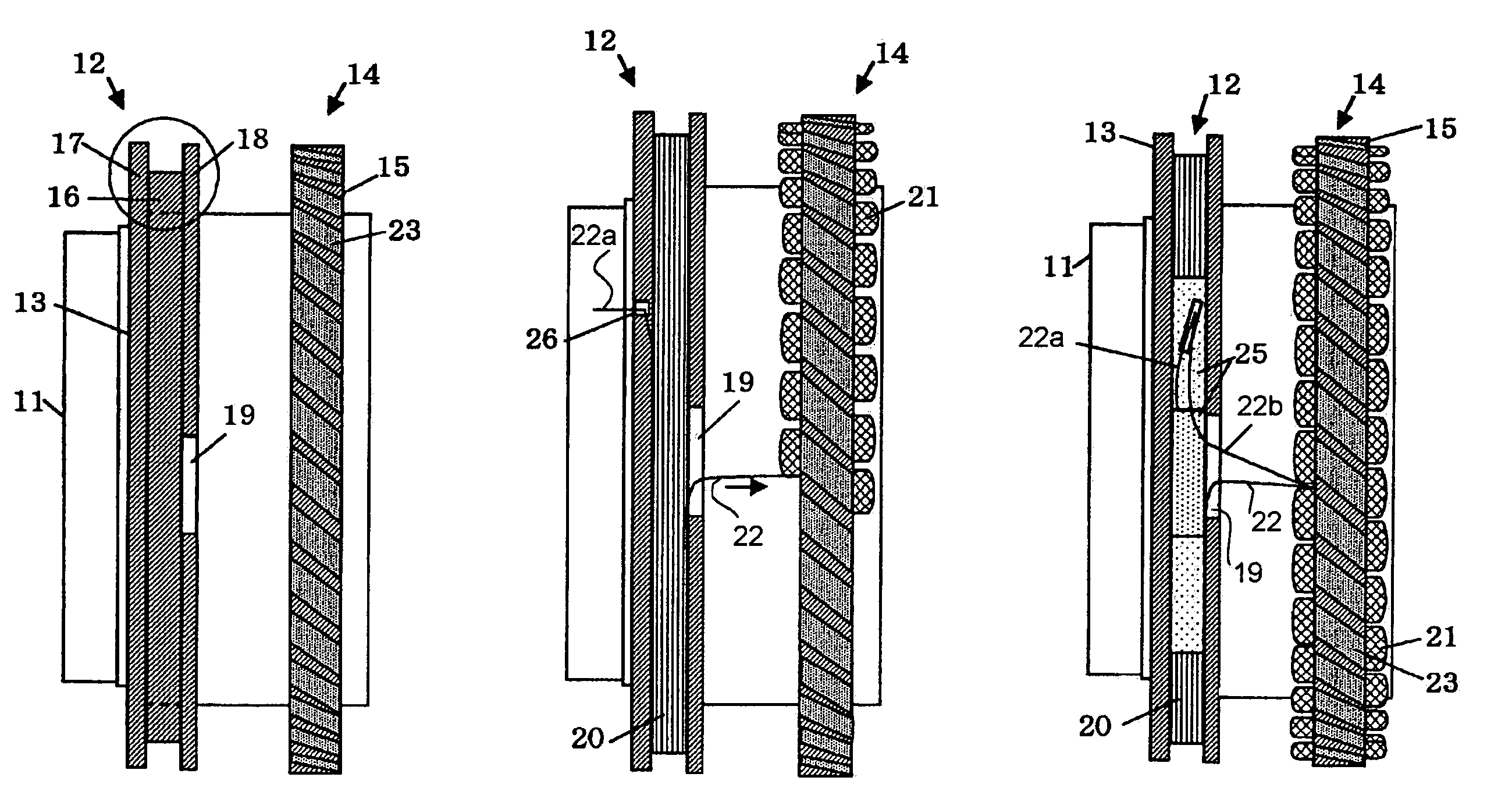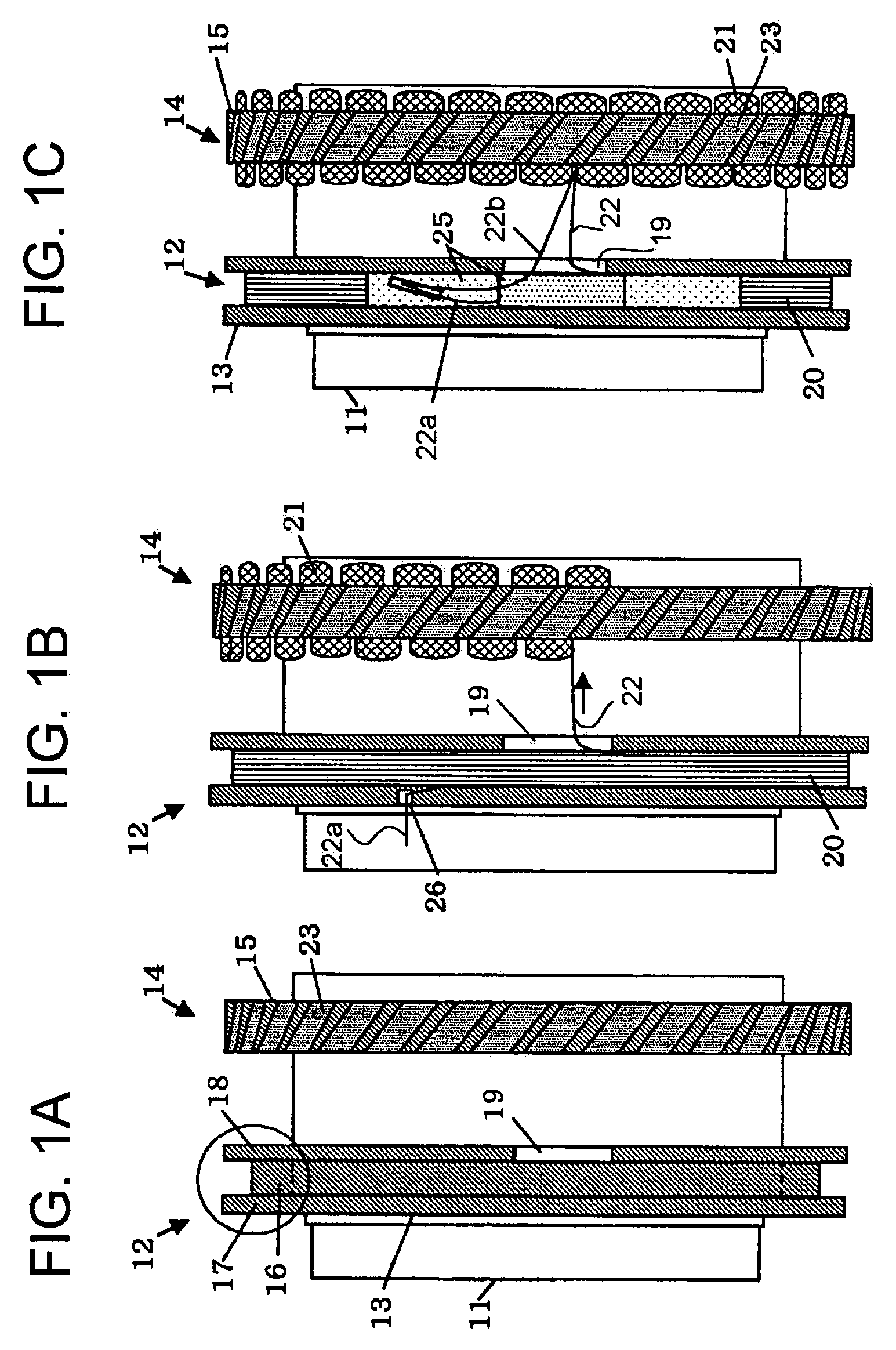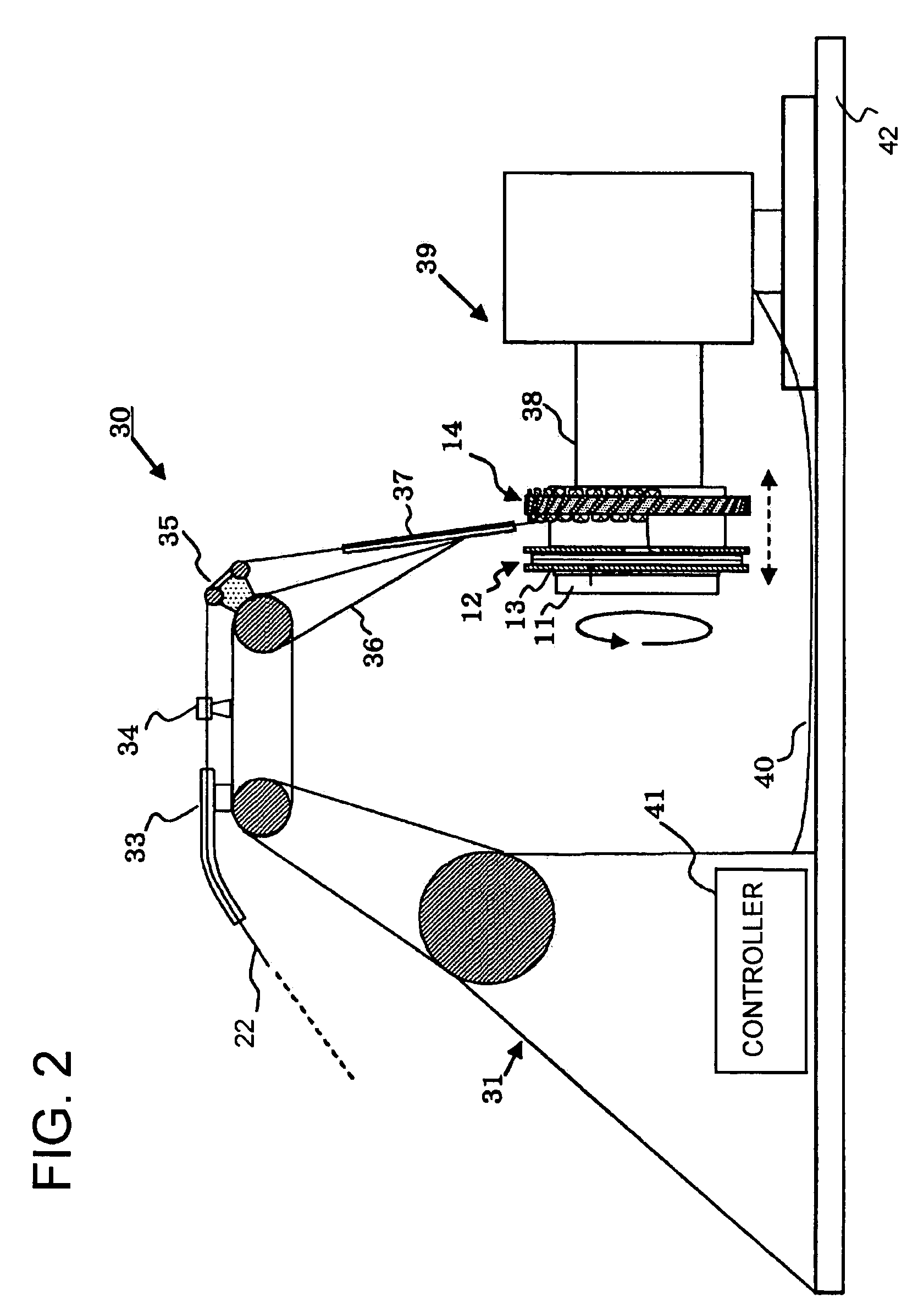Rotation angle sensor having single wire windings and method for winding a rotation angle sensor
a technology of rotation angle sensor and winding, which is applied in the direction of electrical/magnetically converting the output of the sensor, continuously variable inductance/transformer, instruments, etc., can solve the problems of difficult process, difficult alignment, and destruction of the predetermined shape of the coiled winding, and achieves the effect of simple connection structure of the lead wir
- Summary
- Abstract
- Description
- Claims
- Application Information
AI Technical Summary
Benefits of technology
Problems solved by technology
Method used
Image
Examples
Embodiment Construction
[0035]FIG. 1 shows an initial stage of the winding process for a magnetic rotor 14 and a rotor transformer 12 of a rotation angle sensor of the present invention. FIG. 1A shows a laminated core 15 of the magnetic rotor 14 and a coil bobbin 13 of the rotor transformer 12 prior to initiation of coiling. FIG. 1B shows the laminated core 15 of the magnetic rotor 14 and the coil bobbin 13 of the rotor transformer 12 during the coiling process, and FIG. 1C shows the laminated core 15 of the magnetic rotor 14 and the coil bobbin 13 of the rotor transformer 12 after the coiling is completed. The rotation angle sensor includes a stator (not shown) and the magnetic rotor 14 for excitation and detection. In addition, the rotation angle sensor includes a stator transformer (not shown) and the rotor transformer 12 for the electric supply.
[0036]First, as shown in FIG. 1A, the coil bobbin 13 of the rotor transformer 12 and the laminated core 15 of the magnetic rotor 14 are fitted to a hollow rotat...
PUM
| Property | Measurement | Unit |
|---|---|---|
| friction | aaaaa | aaaaa |
| structure | aaaaa | aaaaa |
| magnetic | aaaaa | aaaaa |
Abstract
Description
Claims
Application Information
 Login to View More
Login to View More - R&D
- Intellectual Property
- Life Sciences
- Materials
- Tech Scout
- Unparalleled Data Quality
- Higher Quality Content
- 60% Fewer Hallucinations
Browse by: Latest US Patents, China's latest patents, Technical Efficacy Thesaurus, Application Domain, Technology Topic, Popular Technical Reports.
© 2025 PatSnap. All rights reserved.Legal|Privacy policy|Modern Slavery Act Transparency Statement|Sitemap|About US| Contact US: help@patsnap.com



